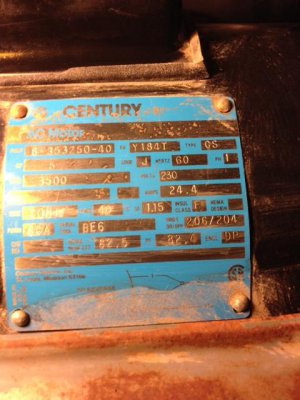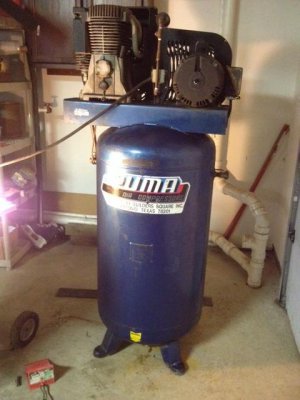- Joined
- May 7, 2014
- Messages
- 776
Due to the failure of several old hand-me-down 20 Gal compressors, I found a local estate sale deal (steal) on a 100Gal PUMA. Date of mid-80s. Single stage, 21.6 CFM It's a 5HP motor 220Vac Upon inspection it did run, but when I got it home:
1) The unit is poping 30amp slow blow's like Candy? My other 5HP 220V 20gal runs on a 20Amp no issue. I'm wondering if the run Cap is dry or going bad. Any known symptoms? the compressor flywheel turns with minimal resistance. There is only 1 cap housing. I do not think there is a run cap, just a start cap actually. Possibly a dual cap in the housing? (start and run?). Not my wheelhouse there. What would you anticipate the start up Amps to be?
2) I dumped at least 5 of water from it when I got it home. Drain nut was clogged. Prob sitting 10 years that way! So from a tank & rust perspective, is there anything I can dump in or spray in to coat it? Running a Plasma table demands clean air.
TIA,
CG.
1) The unit is poping 30amp slow blow's like Candy? My other 5HP 220V 20gal runs on a 20Amp no issue. I'm wondering if the run Cap is dry or going bad. Any known symptoms? the compressor flywheel turns with minimal resistance. There is only 1 cap housing. I do not think there is a run cap, just a start cap actually. Possibly a dual cap in the housing? (start and run?). Not my wheelhouse there. What would you anticipate the start up Amps to be?
2) I dumped at least 5 of water from it when I got it home. Drain nut was clogged. Prob sitting 10 years that way! So from a tank & rust perspective, is there anything I can dump in or spray in to coat it? Running a Plasma table demands clean air.
TIA,
CG.
Last edited:



